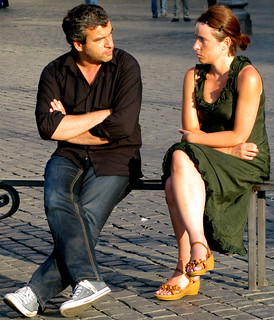So this year I've been diligently working on the draft of the second book in my series, MELT INTO YOU. This one is tentatively scheduled to release sometime next summer, but the manuscript is due to my editor at the end of this month.
Well, I finished the draft a couple of weeks ago and sent it to Sara to get her feedback and to make sure I hadn't suffered from the dreaded second book syndrome. *shudders* Luckily, Sara liked the book and only had a few changes she suggested.
A few. But one was a biggie. She suggested I cut the murder mystery subplot and replace it with something different. Not a huge change in word count, but a very significant change with regards to the story's plot. Hence began my journey through the Stages of Revision Emotions.
The Ten Stages of Revision Emotions
Stage 1: Shock (You want me to change what?) or a "Dammit, that makes sense"
Okay, so in the list of revisions, there is usually one, maybe two, shockers. Your favorite scene needs to be cut or something you thought was vital gets the ax. But most of the time with Sara, her suggestions resonate with me in that "Damn, why didn't I see that?" way. Or she picks out things that were niggling at me but that I couldn't quite put my finger on. That's the gift of having someone with an editorial eye. They can see things you can't because you're too close to it.
Stage 2: Blind Confidence - "I can totally fix this."
This is when you get excited. Things don't look so hard or too bad. You just need to change A B and C and you're golden. La dee da, I'm the kickass writer girl.
Stage 3: The "Oh, Crap"
You actually sit down to make those seemingly innocuous changes and WHAM! you've just blasted your manuscript to swiss cheese. Plot holes are bleeding on your pages, threads with loose ends are flapping in the breeze, your characters have been flattened to road kill.
Stage 4: Sticking Your Fingers in Your Ears and Humming
You've hit the denial phase. This can't be done. If I make this change, I'll have to rewrite the whole book from scratch. My agent/editor must be crazy to think I could change this. It's impossible. I'm just going to leave it the way it is and turn it in. I am the writer, so I get the ultimate call on revisions anyway, right?
Stage 5: Despair
This book is a giant pile of stinking baby dung. I will never be able to fix it. I'm going to fade into oblivion and never be published again. How did I think this was a good story?
Stage 6: The Muse Taps Your Shoulder
"Who the hell are you? Oh yeah, I remember you, creative genius. Where the f*#% have you been you stingy, rat bastard?"
Stage 7: The Idea - *cue angels singing*
You're lying there in bed, taking a shower, talking yourself out of eating the entire cake because you're a talentless hack. And then it hits. The Idea. The way that will fix your book and achieve what your agent/editor wanted from this revision. You suddenly see the seemingly obvious fix and realize how dead on that revision advice was.
Stage 8: Mania
This is where you realize you have two weeks to make this brilliant change and you have oh, ten, twenty, thirty thousand words or whatever to write. You eat, sleep, and breathe your manuscript. The ideas flow and you're excited about this story again. Thrilled to see it turn into something way better than what you originally had. It's a high. People may want to put you in a white jacket.
Stage 9: Peace
You finish that bad boy and turn it in. Then you eat that whole cake anyway, but this time, it's because you've earned it. :)
Stage 10: Ah, hell.
You get another set of revisions back and the process starts all over again. :)
These stages also apply to getting feedback from crit partners and beta readers. The key, for me, is recognizing that I will get there. That when it seems I just am not good enough to fix it, an idea will come. But it won't necessarily happen day one after I get my revision notes. My mind needs time to process and stew before tackling things.
So how about you? Have you been through any of these stages? Any other stages you would add?












